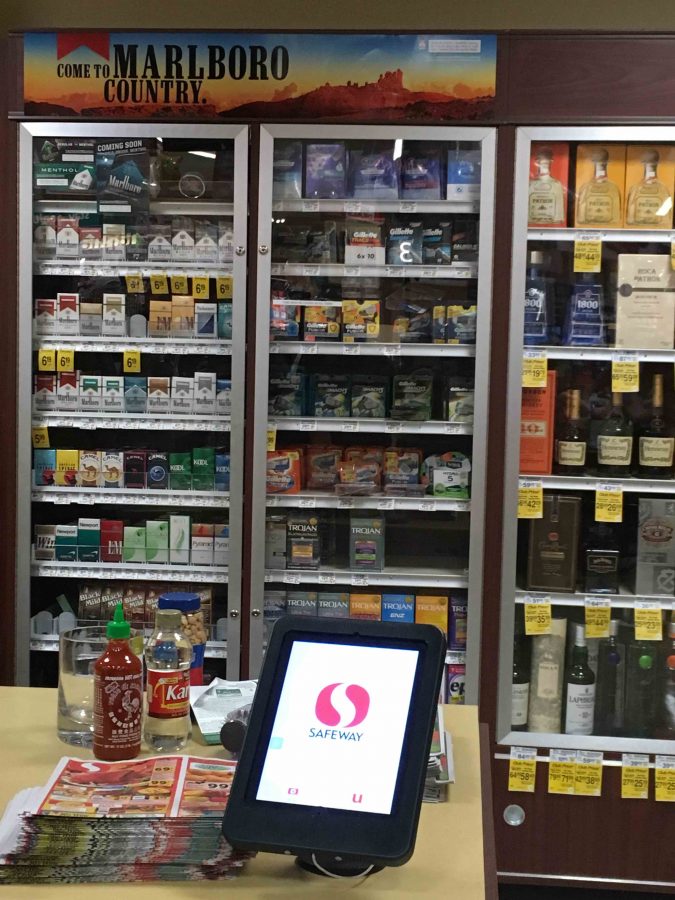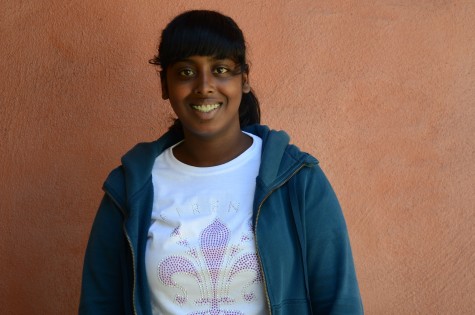Propositions demystified: What are you voting on?
The cigarettes are in a cabinet from the Safeway in Cupertino. A customer would have to ask customer service for a pack and the clerk would unlock the cabinet and sell it to them.
November 17, 2016
The Nov. 8 ballot for the Santa Clara County contains 17 propositions numbered 51 through 67, and the voters can select yes or no to approve or reject the respective proposition.
Marijuana Legalization
The state has put forward Proposition 64 on the Nov. 8 ballot, which aims to legalize marijuana for recreational use for adults 21 or older.
If passed, the state would tax businesses that would then be allowed to grow non-medical marijuana, resulting in tax revenues of over $1 billion. This money would be used for law enforcement, environmental production and youth programs.
“My opinion is that [marijuana] should be legal,” said Tiffany Gelineau, substitute nurse for the lower, middle and upper school campuses. “That way it should be legal for people who are 21 and older who can use it, hopefully responsibly. Alcohol is a far more worse substance impairing people’s judgement. I know that it should definitely be in the hands of people who medically need it and they should not be violated for having it.”
Carryout Bag Charges
Proposition 67, a referendum on the Nov. 8 ballot, will uphold the ban of single-use plastic bags if approved.
Currently, grocery stores and pharmacies can only issue recycled paper bags and reusable bags at a charge of 10 cents per bag. Customers can bring their own reusable bag if they wish.
“A lot of stores do offer discounts when you bring your own bag,” said Devin Mitchell, Guest Service Team Lead (GSTL) at Target in Cupertino. “Personally in our store, we give you five cents off for every reusable bag that you do bring. So, you can even pay for a bag that is paper and then bring it back two times and it is like you did not even pay anything. I would vote to keep it just because in my opinion, it just does not make that much of a difference in our community.”
Cigarette Tax
Proposition 56 on the Nov. 8 ballot suggests increasing the cost of cigarettes by $2 per pack.
The tax will yield $1 to $1.4 billion in the 2017-18 financial year. The money will go to funding health care, preventing of tobacco use, research and law enforcement.
“I am hoping that increasing the cost of a pack of cigarettes will make those people who are just wanting to start or the casual smokers say “Hey, it is not worth it”,” Clare Elchert, upper school nurse, said. “Hopefully there will be education and cessation programs to help those who are already smokers because it is an addiction and your body and brain do crave it when you try to stop.”
Death Penalty
Proposition 62 on the Nov. 8 ballot replaces the death penalty with life imprisonment without the possibility of parole.
This proposition decreases the criminal justice cost by around $150 million annually.
“I do not disagree with it, only because [there have been] a lot of people who have been sentenced to death penalty, and a lot of those sentences have never been actually taken to the full extent of seeing it through,” upper school history teacher Roxana Pianko said. “[There are] very few death sentences that actually make it to the point where the person is executed. There is probably a lot of money that goes into that. A lot of these people who end up sentenced die of other reasons.”
Another proposition also addresses the death penalty. Proposition 66 would require changes to the existing process for appeals such as time limits on those appeals.
School Bonds
Proposition 51 on the Nov. 8 ballot allows public schools, charter schools, vocational education facilities and California community college facilities to issue bonds to build new classrooms and modernize the schools.
The bonds would raise about $9 billion for the construction of the school facilities.
“I am very much in favor of Proposition 51 because it is a matching program, and if a local school district raises some money, the state will agree to give you some matching money and help you pay for the cost of building the new buildings,” said Graham Clark, associate superintendent of Fremont Union High School District. “I think it is very important for local communities to pay for some of the costs of building the building. I don’t think the state should pick up the whole cost. It will be helpful if [local communities] match it.”
This piece was originally published in the pages of The Winged Post on November 16, 2016.




![LALC Vice President of External Affairs Raeanne Li (11) explains the International Phonetic Alphabet to attendees. "We decided to have more fun topics this year instead of just talking about the same things every year so our older members can also [enjoy],” Raeanne said.](https://harkeraquila.com/wp-content/uploads/2025/10/DSC_4627-1200x795.jpg)


















![“[Building nerf blasters] became this outlet of creativity for me that hasn't been matched by anything else. The process [of] making a build complete to your desire is such a painstakingly difficult process, but I've had to learn from [the skills needed from] soldering to proper painting. There's so many different options for everything, if you think about it, it exists. The best part is [that] if it doesn't exist, you can build it yourself," Ishaan Parate said.](https://harkeraquila.com/wp-content/uploads/2022/08/DSC_8149-900x604.jpg)




![“When I came into high school, I was ready to be a follower. But DECA was a game changer for me. It helped me overcome my fear of public speaking, and it's played such a major role in who I've become today. To be able to successfully lead a chapter of 150 students, an officer team and be one of the upperclassmen I once really admired is something I'm [really] proud of,” Anvitha Tummala ('21) said.](https://harkeraquila.com/wp-content/uploads/2021/07/Screen-Shot-2021-07-25-at-9.50.05-AM-900x594.png)







![“I think getting up in the morning and having a sense of purpose [is exciting]. I think without a certain amount of drive, life is kind of obsolete and mundane, and I think having that every single day is what makes each day unique and kind of makes life exciting,” Neymika Jain (12) said.](https://harkeraquila.com/wp-content/uploads/2017/06/Screen-Shot-2017-06-03-at-4.54.16-PM.png)








![“My slogan is ‘slow feet, don’t eat, and I’m hungry.’ You need to run fast to get where you are–you aren't going to get those championships if you aren't fast,” Angel Cervantes (12) said. “I want to do well in school on my tests and in track and win championships for my team. I live by that, [and] I can do that anywhere: in the classroom or on the field.”](https://harkeraquila.com/wp-content/uploads/2018/06/DSC5146-900x601.jpg)
![“[Volleyball has] taught me how to fall correctly, and another thing it taught is that you don’t have to be the best at something to be good at it. If you just hit the ball in a smart way, then it still scores points and you’re good at it. You could be a background player and still make a much bigger impact on the team than you would think,” Anya Gert (’20) said.](https://harkeraquila.com/wp-content/uploads/2020/06/AnnaGert_JinTuan_HoHPhotoEdited-600x900.jpeg)

![“I'm not nearly there yet, but [my confidence has] definitely been getting better since I was pretty shy and timid coming into Harker my freshman year. I know that there's a lot of people that are really confident in what they do, and I really admire them. Everyone's so driven and that has really pushed me to kind of try to find my own place in high school and be more confident,” Alyssa Huang (’20) said.](https://harkeraquila.com/wp-content/uploads/2020/06/AlyssaHuang_EmilyChen_HoHPhoto-900x749.jpeg)











